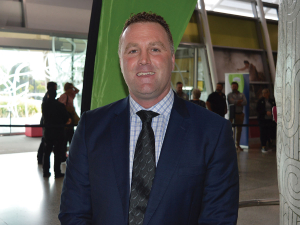Trade barriers cost New Zealand billions of dollars annually, according to an NZIER report for the Dairy Companies Association of New Zealand (DCANZ).
The report, titled Dairy trade’s economic contribution to New Zealand, highlights the strong contribution the dairy sector has continued to make to New Zealand’s national and regional economic development, even while it has been at the bottom of a price cycle, and despite global dairy markets remaining highly distorted.
“Trade barriers are a significant cost to New Zealand. Tariffs alone are suppressing the value of our dairy products by around 1.3 billion dollars annually,” says DCANZ chairman Malcolm Bailey.
“On top of this, non-tariff measures add over $3 billion in costs to New Zealand dairy exports in the APEC region alone,” he adds.
The report found dairy exports generate more than one in every four dollars earnt by New Zealand and the sector provides incomes for 40,000 New Zealanders, including 2,100 jobs in Auckland.
“These are good jobs with the highest average salary levels for a food manufacturing sector, and the second highest for a farming sector,” says Mr Bailey.
“Federated Farmers and DairyNZ have a workplace action plan underway to make sure the working environment for jobs in our sector is a good one that goes beyond compliance levels.”
At a district level in New Zealand, the dairy sector is responsible for:
- One in every five jobs in the Waimate, Otorohonga and Southland districts.
- More than one in every ten jobs in Matamata Piako, South Taranaki, Hauraki, Waipa, Ashburton, South Waikato, Clutha and Kaipara.
- One in every 20 jobs in Hurunui, Tararua, Stratford, Waikato, South Wairarapa, Buller, Westland, Timaru, and Manawatu.
“Over the past 15 years, the dairy employment has grown by an average of 3.7% per year, over twice as fast as the 1.7% recorded for total employment” says Bailey.
The report outlines how the economic contribution goes beyond the farm gate. It found dairy processors are spending $5.4 billion on non-milk inputs like equipment hire, management services and packaging each year.
Additionally, dairy farmers are spending $12.2 billion dollars on goods and services within their communities. This flow through economic effect means the dairy sector accounts for more than ten per cent of regional GDP in the Waikato, the West Coast and in Southland.
Bailey emphasises that it is not all an economic story for dairying.
“The dairy industry has been working hard to also invest in and deliver on sustainability. There is a commitment to stock exclusion from streams, to riparian planting, better effluent management and better nutrient budgeting. The sector is proud that these efforts are beginning to translate into noticeable improvements.”
“Over the past four years dairy processors have also invested more than $2 billion in processing capital to improve processing efficiency and diversity New Zealand’s dairy production mix.”
“These investments will support the sector to continuing delivering high-quality, safe dairy products with increasing value for consumers”.
“Removing trade barriers will allow New Zealand’s dairy sector, ultimately, to maintain and build both sustainability and value-adding momentum,” says Bailey.


















